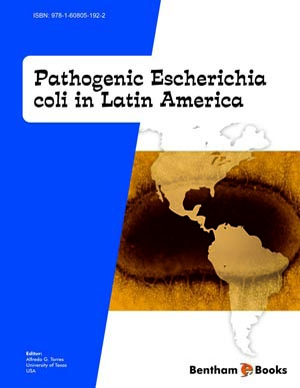Abstract
Enteroaggregative Escherichia coli (EAEC) have been identified in children and adults living in developed and developing countries as well as in travelers returning from developing countries and in patients infected with HIV. In addition to the acute complications of diarrhea, such as dehydration and death, EAEC can also cause persisting diarrhea that can lead in turn to malnutrition and impaired growth and development in children. EAEC strains are defined by the ability to produce a “stacked brick” appearance when placed on HEp-2 epithelial cells in culture, and contaminated food appears to be the main source of EAEC infection. EAEC are genetically heterogeneous. EAEC strain 042 is the prototypical strain for the study of virulence factors and pathogenicity; however, emergence of atypical EAEC has been described. Three major features of EAEC pathogenesis have been defined; abundant adherence to the intestinal mucosa, elaboration of enterotoxins and cytotoxins, and induction of mucosal inflammation. Infection with strains that possess specific virulence factors correlate with elevated levels of fecal cytokines and inflammatory markers. Unfortunately, the diagnosis of EAEC infection remains limited to research laboratories and therefore, are of little use in guiding antibiotic therapy. EAEC induce short-term immunity in healthy individuals which suggests that immunoprophylaxis is a potential option for control of EAEC.


